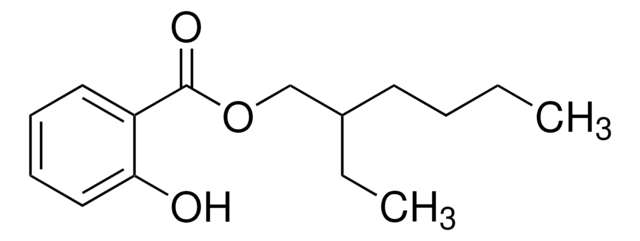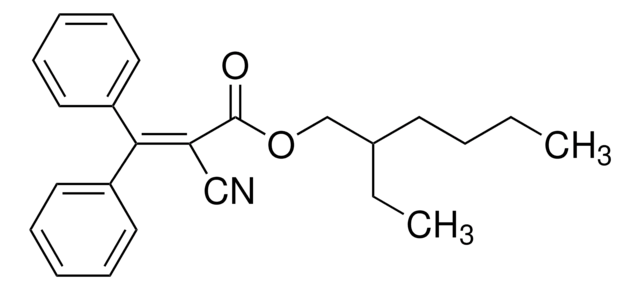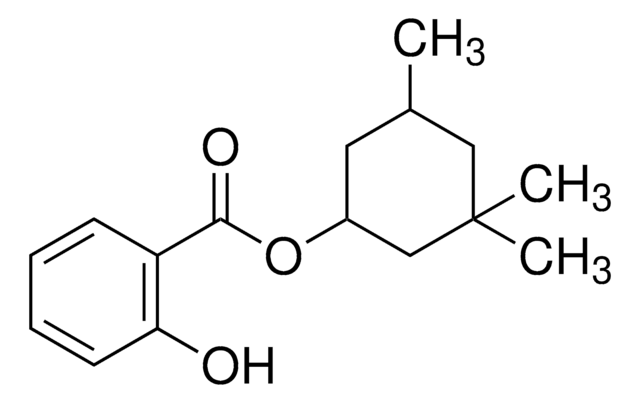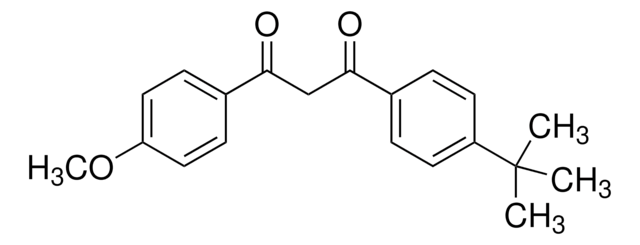1477943
USP
Octisalate
United States Pharmacopeia (USP) Reference Standard
Synonym(s):
2-Ethylhexyl salicylate, Octisalate, Octyl salicylate
About This Item
Recommended Products
grade
pharmaceutical primary standard
API family
octisalate
manufacturer/tradename
USP
refractive index
n20/D 1.502 (lit.)
bp
189-190 °C/21 mmHg (lit.)
density
1.014 g/mL at 25 °C (lit.)
application(s)
pharmaceutical (small molecule)
format
neat
SMILES string
CCCCC(CC)COC(=O)c1ccccc1O
InChI
1S/C15H22O3/c1-3-5-8-12(4-2)11-18-15(17)13-9-6-7-10-14(13)16/h6-7,9-10,12,16H,3-5,8,11H2,1-2H3
InChI key
FMRHJJZUHUTGKE-UHFFFAOYSA-N
Looking for similar products? Visit Product Comparison Guide
General description
Application
Analysis Note
Other Notes
related product
signalword
Warning
hcodes
pcodes
Hazard Classifications
Aquatic Chronic 1
Storage Class
10 - Combustible liquids
wgk_germany
nwg
flash_point_f
323.6 °F - closed cup
flash_point_c
162 °C - closed cup
Certificates of Analysis (COA)
Search for Certificates of Analysis (COA) by entering the products Lot/Batch Number. Lot and Batch Numbers can be found on a product’s label following the words ‘Lot’ or ‘Batch’.
Already Own This Product?
Find documentation for the products that you have recently purchased in the Document Library.
Customers Also Viewed
Our team of scientists has experience in all areas of research including Life Science, Material Science, Chemical Synthesis, Chromatography, Analytical and many others.
Contact Technical Service




